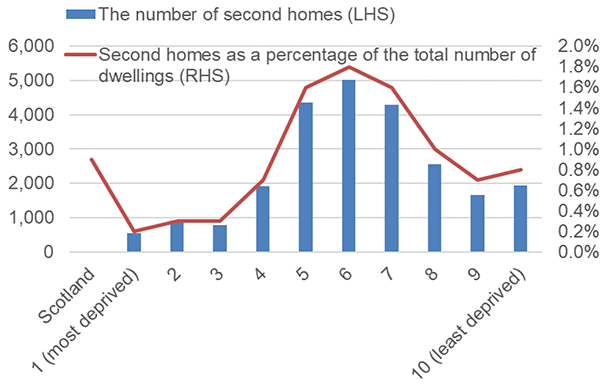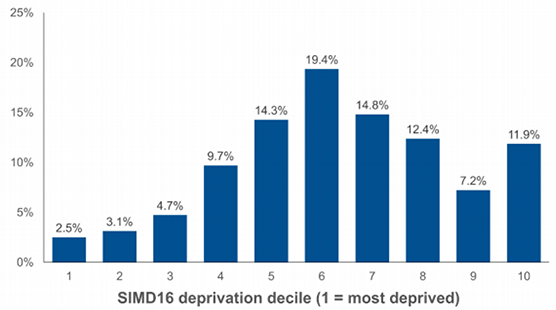Non-domestic rates/Council Tax second and empty homes consultation: partial impact assessments
Partial impact assessments relating to the consultation on council tax for second and long term empty homes, and thresholds for non-domestic rates.
5. Fairer Scotland Duty
5.1 This represents an initial Fairer Scotland Duty assessment.
Summary of aims and expected outcomes of strategy, proposal, programme or policy
5.2 The policy objectives are set out in chapter 1.
Summary of evidence
People on low incomes
5.3 Negative impacts include the impact of second and empty homes, and short-term lets on the availability of housing stock. This can also, in turn, increase house prices and rents in the private rented sector.
5.4 Pressures on housing supply due to second homes, empty homes and short-term lets can have an impact on the ability for people to relocate to take up job opportunities. This was flagged as a particular concern, during consultation on short-term lets licensing, for rural and island areas such as Skye and the Western Isles, where high numbers of short-term lets and second homes could make it difficult for people to relocate to take up job opportunities.
5.5 However, short-term lets may also have a positive impact for guests on low incomes, by offering a cheaper alternative to other forms of accommodation, such as hotels.
People living in deprived areas
5.6 Data produced by the National Records of Scotland[6] shows the distribution of second homes by SIMD.[7] The data shows that second homes are more common in less deprived areas, particularly in the middle of the distribution. As at September 2021, there were over 5,000 second homes in the 6th SIMD, which equates to 1.6% of all dwellings in that decile. 57% of all second homes in Scotland are located in the 5th, 6th and 7th deciles. On the other hand, only 17% of all second homes in Scotland are in the first 4 (most deprived) deciles.

Source: National Records of Scotland, Household and Dwelling Estimates by Scottish Index of Multiple Deprivation (SIMD)
5.7 The research undertaken on short-term lets also found there are proportionally more Airbnb listings in the least deprived deciles than the three most deprived deciles in total:
Across Scotland as a whole, there were proportionally more Airbnb listings in less deprived areas, particularly those in the middle of the SIMD 2016 rankings. There were more Airbnb listings (11.9% of the Scottish total) in the least deprived decile than there were in the three most deprived deciles combined (10.3%). The single biggest clustering of Airbnb listings was found in decile 6 areas, which are typically neither very deprived nor particularly affluent (e.g. Fountainbridge in Edinburgh, Garnethill in Glasgow). These areas accounted for 19.4% of all Scottish Airbnb listings, as shown in Figure 2.

Source: Inside Airbnb, May 2019, Scottish Government for SIMD 2016.
5.8 Therefore, any local economic benefits/costs of second homes and more specifically short-term lets are less likely to be evenly distributed across levels of deprivation.
5.9 The one major outlier to this national picture is in Glasgow, where the greatest number of short-term lets are in the most deprived decile (14.5%).
Evidence gaps
5.10 Limited data is available on the number and type of short-term let listings. Airbnb has provided data to the Scottish Government, but we do not have data from other platforms. The introduction of short-term let licensing in Scotland in October 2022 is starting to provide councils and the Scottish Government with accurate data. We expect to have a better understanding of numbers of short-term lets by January 2024.
Summary of assessment findings
5.11 We will review whether to complete a full assessment after the consultation exercise is complete.
Contact
Email: secondandemptyhomes@gov.scot
There is a problem
Thanks for your feedback